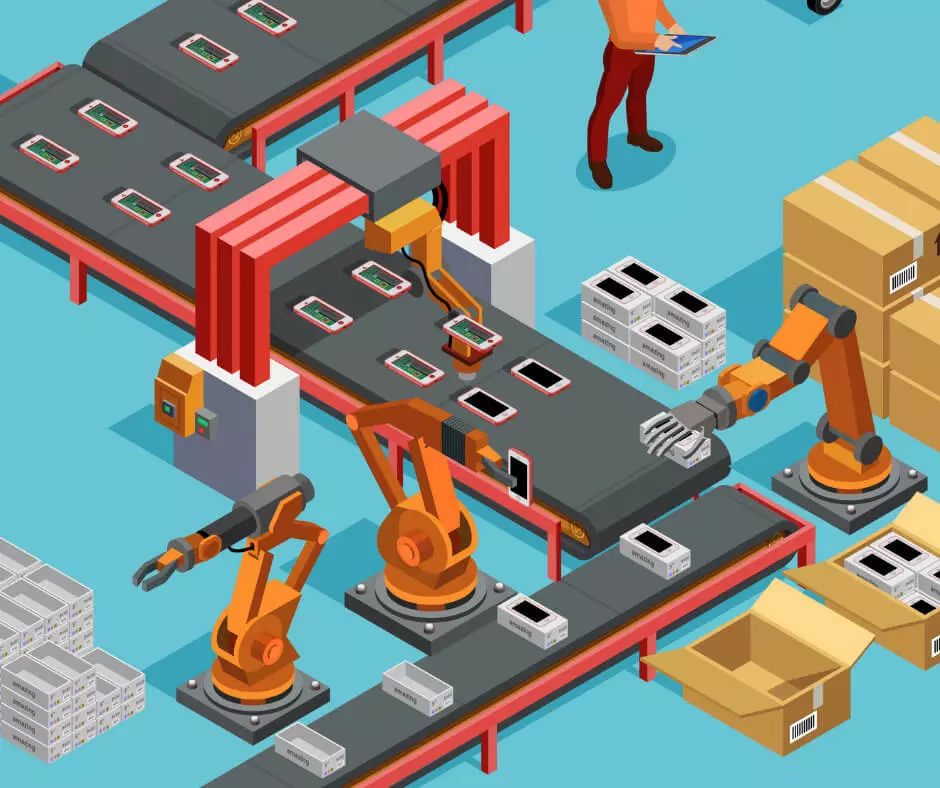
INDUSTRIAL ROBOTICS AND PALLETIZING: ADVANTAGES AND EMPLOYMENTS
Industrial automations for palletizing activities are useful tools for many productive sectors. But what exactly do we mean when we use the term “palletizing”? What is industrial robotics help when it comes to this type of activity?
Let’s begin with definitions. Palletizing is the operation of stacking goods on pallets to optimise space in storage warehouses and minimise the risk of accidents.
For the palletizing pocess to be well executed, the containers – nine times out of ten they are boxes of different dimensions – must be perfectly placed on pallets. It’s important that they are stable and their weight is well distributed to prevent them from falling and therefore ruining the goods and being a danger to the operators.
Who is responsible for handling the packing of goods? An operator or an industrial robot palletizer can do it. Certainly, this is an end-of-line phase present in any production sector, so anyone, any company, can choose to entrust this task to a robotic cell.
The palletizing implants on the market today are of different types. Let’s see them together:
- Cartesian system: Stacking on pallets of various kinds of packages when a high working speed and high positioning accuracy are required. They are reliable and flexible implants and have a very small footprint due to their simple mechanics;
- Layered: they’re automatic machines which have the function of moving an entire layer of product on a pallet;
- With magnetic head: For palletizing containers and/or metallic products (e.g. tinplate cans);
- Industrial robots: automatic stacking of various types of packages on pallets. They’re fast, flexible, precise and suitable for many fields.
Robotic cells for palletizing: how do they work?
In this type of industrial automation both Cartesian and robotic systems are installed, which in our opinion is the best solution to automate the palletizing phase.
The industrial robotic automations that carry out this type of activity are fast, adaptable to many company contexts and applicable to many different types of goods. Let’s see a few examples of what robotics cells can palletize:
- Packages and cartons
- Barrels and bottles
- Bags
- Flexible envelopes
- Boxes of any shape and size
The requirement of these products is that they must align perfectly on wooden or plastic pallets, because otherwise they wouldn’t be stable and safe.
In order to place them on pallets in an automated way, robots specially designed for this operation are needed. In fact, they have the characteristic of being very resistant to work quickly and support heavy weights, as well as being adaptable to the picking of multiple types of products and materials. Finally, they are extremely precise.
The level of accuracy can be increased through intelligent vision systems or with a 3D sensor, capable of performing goods recognition, sorting, dimensional control and height detection.
Industrial palletizing robots are usually placed at the end of the production line or in special areas intended for packaging, thus serving the distribution and shipping phase. The pallets have well-defined dimensions, studied, precisely, to optimize the spaces in the warehouses according to the type of products that are packed.
The two principal benefits that derive from entrusting this operation to a robotic cell are:
- Reliability of results
- Fast and continuous processing times without any drop in performance
However, it’s important to keep in mind that these types of robotic cells are connected to the logistic structure of the production companies that use them, much more than any other type of robotized cell. Industrial automations that work with palletizing must integrate with the activities of finished goods warehouses, with machines destined to movement and with the company management system.
They’re automations that require great speed. The distribution of goods on pallets, in fact, does not only take place to carry out storage in the warehouse, but often to prepare orders for delivery. In this second case, the speed of execution is what allows to make the process of order fulfillment as efficient as possible. For this reason industrial robots for palletizing must be very flexible, since the products to place on pallets can vary considerably from order to order.
For this reason, in addition to cartesian or anthropomorphic robots and vision systems, it’s possible to also integrate weighing systems, labeling machines or pallet wrapping systems in the cell.
T-Flexipack: Tera Automation’s robotic cell for palletizing
In our industrial robotic solutions catalogue a T-Flexipack robotic cell for palletizing could not be missed. It deserves a place in this article because it not only carry out palletizing but also depalletizing objects of various shapes and sizes.
Besides, this robotic cell can pick and place products, boxes and other goods both on pallets and boxes, crates and conveyor belts. Its flexibility is everything, and it is very compact, so that it can be applicable to many contexts.
Summarizing, the main requirements that are required to robotic cells for palletizing from manufacturers are :
- Speed
- Flexibility
- Safety
- Reliability
- Precision
